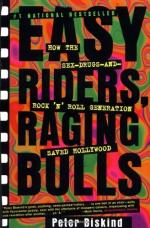|
This section contains 645 words (approx. 3 pages at 300 words per page) |

|
The rise of radio (see entry under 1920s—TV and Radio in volume 2) as an entertainment medium in the 1920s and 1930s resulted in the advent of the disc jockey (or DJ) as an influential on-air personality. Not only did disc jockeys play records; they spoke directly to listeners as they introduced the music, read commercials, made announcements—and served as a link between the audience and the programming.
Initially, disc jockeys were not skilled announcers, but technicians who operated the broadcast equipment and doubled as on-air voices. The most influential of the early professional DJs was Martin Block (c. 1901–1967), a staff announcer at New York's WNEW-AM, who suggested that the station play recorded music. This led to his hosting The Make-Believe Ballroom, which became enormously popular during the 1930s and 1940s. Block was its host from 1936 through 1956. On the program, he invited listeners to an...
|
This section contains 645 words (approx. 3 pages at 300 words per page) |

|




